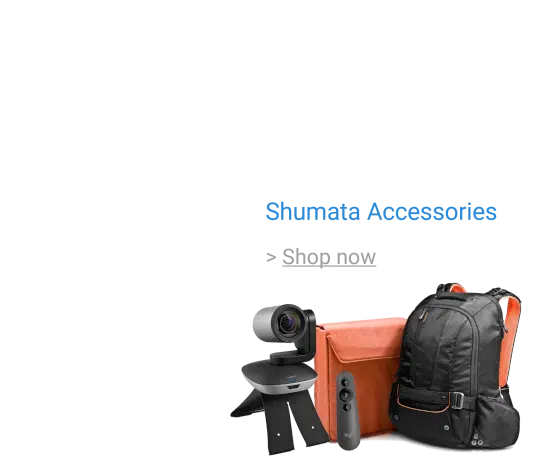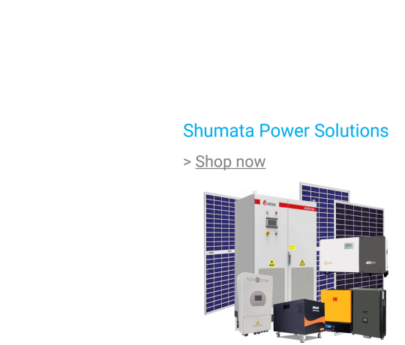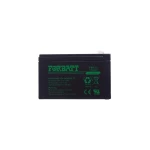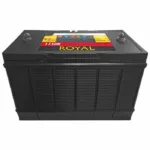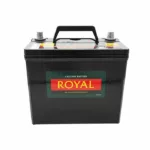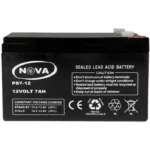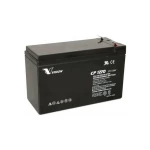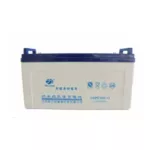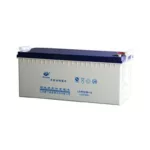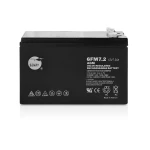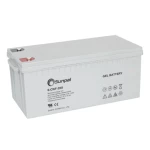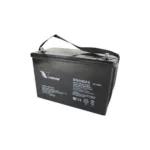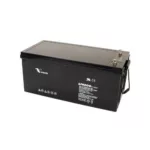No products in the basket.
A lead acid battery comprises of an array of two chemically dissimilar lead based plates in a dilute sulphuric acid solution – which can be either liquid or a gel. The positive plate contains lead dioxide PbO2, and the negative plate pure lead in a spongy form.
There are 2 main types of lead acid batteries:
Vented lead acid (VLA) batteries are all “open”, allowing gas to escape without any positive pressure building up in the cells. They can be topped up when required and are therefore more tolerant to high temperature operation and over charging. The free electrolyte also facilitates cooling of the battery.
Sealed lead acid (SLA or VRLA) batteries, also known
as maintenance free batteries, are sealed with a pressure release valve, which limits the escape of gas to above the release pressure. Hence the term “Valve Regulated Lead Acid”, or VRLA for short. The electrolyte is immobilised to prevent spillage and facilitate gas recombination within the battery. These batteries are usually more compact in size than vented lead acid batteries and typically used
in areas where ventilation is insufficient to accommodate vented batteries. They cannot be topped up and are more susceptible to failure due to high temperature than vented lead acid batteries.
Most lead acid batteries can only be discharged to about 50% of their gross storage capacity (this is known as DoD – depth of discharge). Discharging further than 50% will decrease the life span significantly. Whereas lithium ion batteries can be discharged to 90% of their gross storage capacity.
To find out more about lead acid batteries – click here
Lead Acid Battery Packs
Showing all 11 results
-
Power Solutions, Batteries, Lead Acid Battery Packs
Vision 100Ah 12V Deep Cycle AGM (eXtra Heavy Duty 6FM100Z-X)
 Power Solutions, Batteries, Lead Acid Battery Packs
Power Solutions, Batteries, Lead Acid Battery PacksVision 100Ah 12V Deep Cycle AGM (eXtra Heavy Duty 6FM100Z-X)
General Features
- Absorbent Glass Mat (AGM) technology for efficient gas recombination of up to 99% and freedom from electrolyte maintenance or water adding.
- Not restricted for air transport-complies with IATA/ICAO Special Provision A67.
- UL-recognized component.
- Can be mounted in any orientation.
- Computer designed lead, calcium tin alloy grid for high power density.
- Long service life, float or cyclic applications.
- Maintenance-free operation.
- Low self-discharge.
- 10 Years Design Life
SKU: SOL-B-100-12V-Z -
Power Solutions, Batteries, Lead Acid Battery Packs
Vision 200Ah 12V Deep Cycle AGM (eXtra Heavy Duty 6FM200Z-X)
 Power Solutions, Batteries, Lead Acid Battery Packs
Power Solutions, Batteries, Lead Acid Battery PacksVision 200Ah 12V Deep Cycle AGM (eXtra Heavy Duty 6FM200Z-X)
General Features
- Absorbent Glass Mat (AGM) technology for efficient gas recombination of up to 99% and freedom from electrolyte maintenance or water adding.
- Not restricted for air transport-complies with IATA/ICAO Special Provision A67.
- UL-recognized component.
- Can be mounted in any orientation.
- Computer designed lead, calcium tin alloy grid for high power density.
- Long service life, float or cyclic applications.
- Maintenance-free operation.
- Low self-discharge.
- 10 Years Design Life
SKU: SOL-B-200-12VZ
Free Delivery on orders R3500+
99% Positive Customer Reviews
7 Days Free Returns
Secure Payment Options
Only the Best Brands
Shumata Online Store
462 reviews
what our clients say
